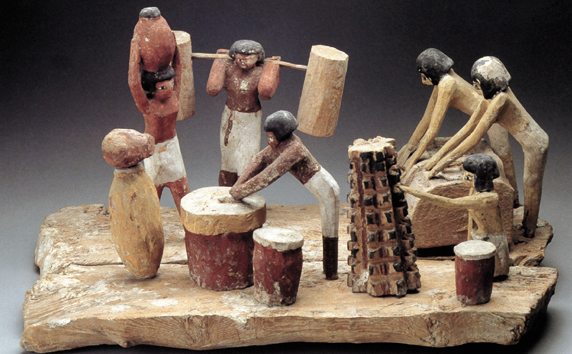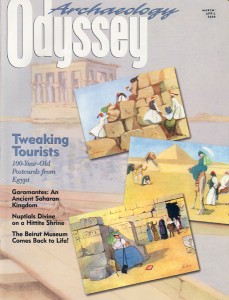Ancient Life: Just Swill!
Toasting the pharaohs

Looking for a new brand of imported beer? How about some robust Egyptian ale, vintage 2100 B.C.?
This 21-inch-wide model of a brewery was found in a 4,000-year-old tomb in Asyut, Egypt, 200 miles south of Cairo. It shows six ancient Egyptians involved in different phases of beer making. The two women at far right grind grain on a stone; the grain is then either roasted or baked into loaves by the woman kneeling beside a tall, conical oven in front of the grinders. The two men at left bring supplies of fresh water, while the man at center strains the grain-and-water mash through a papyrus sieve. The large stoppered jar at far left probably contains the brewery’s final product: fermenting beer.
A thick, hearty drink made of fermented wheat or barley, beer was a nutritious complement to the ancient Egyptian diet. No one is sure exactly how the Egyptians made beer, however. Many scholars believe they mixed bread crumbs with water and then allowed the mixture to age—and ferment. Others, like Cambridge University archaeologist Delwen Samuel, contend that the brewing process was more complex. Samuel’s 1996 studies of beer residue from the New Kingdom (1570–1070 B.C.) suggest that the Egyptians brewed their swill from a thick mash of malted grain (sprouted and then roasted) and unmalted grain (unsprouted), not unlike the method used by brewers today.
Already a library member? Log in here.
Institution user? Log in with your IP address.

